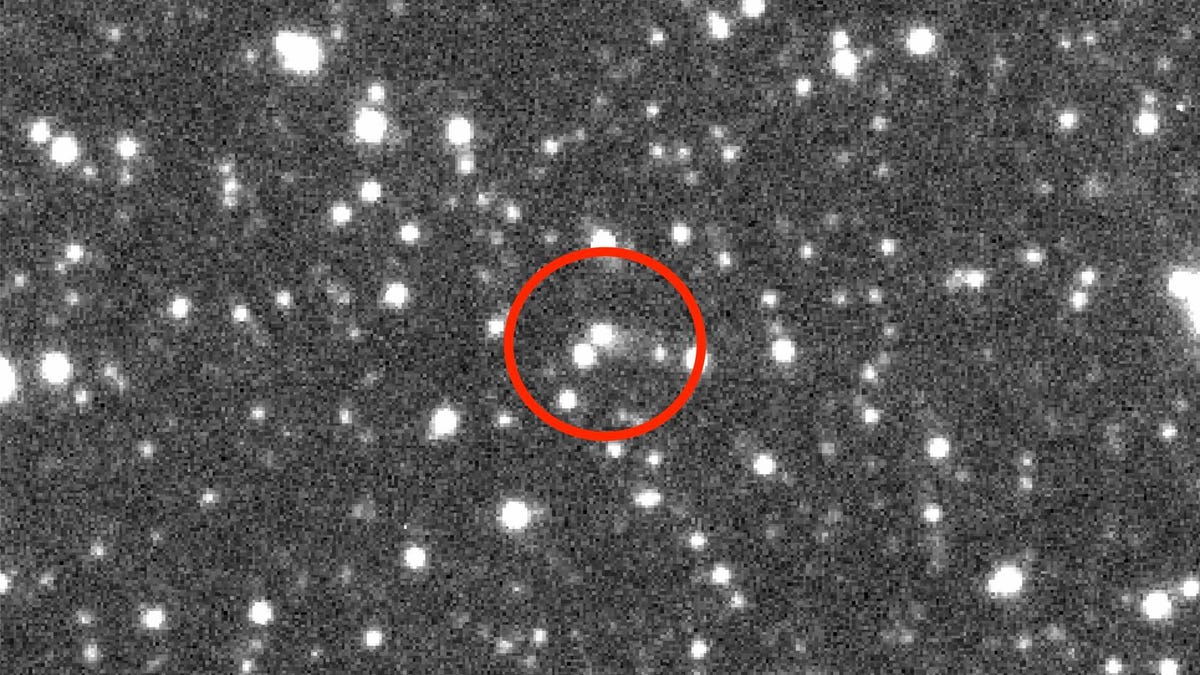Scientists discover first-of-its-kind asteroid that's having an identity crisis
It's doing what no known Jupiter Trojan asteroid has done before.
We have a case of a cosmic cosplay.
Asteroid 2019 LD2 falls into the category of Jupiter Trojan asteroids. It's part of a swarm that orbits the sun ahead of Jupiter, like an advance guard along the planet's path. But this asteroid isn't like its friends.
On Wednesday, astronomers at the University of Hawaii's NASA-funded Asteroid Terrestrial-impact Last Alert System project announced the discovery of "the first known Jupiter Trojan asteroid to have sprouted a comet-like tail."
The red lines highlight 2019 LD2 in these ATLAS images. The right-side image has been processed to remove the stars, which make the tail visible.
Usually the difference between asteroids and icy comets is pretty clear cut. NASA describes asteroids as "rocky fragments" left over from the beginning of the solar system and comets as "cosmic snowballs of gas and dust."
Asteroid-comet crossovers are unusual, but not unheard of. Scientists in 2019 observed asteroid (6478) Gault's dust tail.
ATLAS first spotted 2019 LD2 in mid-2019. Closer inspection and later images highlighted the asteroid's tail full of dust and gas.
The asteroid passed out of view and reappeared in April 2020. "These observations showed that 2019 LD2 has probably been continuously active for almost a year," said the University of Hawaii. This left scientists with a mystery: Why is this asteroid behaving like a comet?
The researchers said most of the Jupiter Trojan comets were captured into their orbital paths billions of years ago, long since shedding the surface material that would normally form a comet's tail. That means 2019 LD2 may be a newcomer to the asteroid swarm, or perhaps it smacked into something.
"We have believed for decades that Trojan asteroids should have large amounts of ice beneath their surfaces, but never had any evidence until now. ATLAS has shown that the predictions of their icy nature may well be correct," said ATLAS collaborator Alan Fitzsimmons, an astronomer at Queen's University Belfast.
The main job of ATLAS is to spot potentially hazardous space objects that might pose a problem for Earth, but this oddball asteroid isn't one of those. The University of Hawaii described it as "harmless but fascinating."


